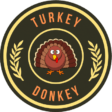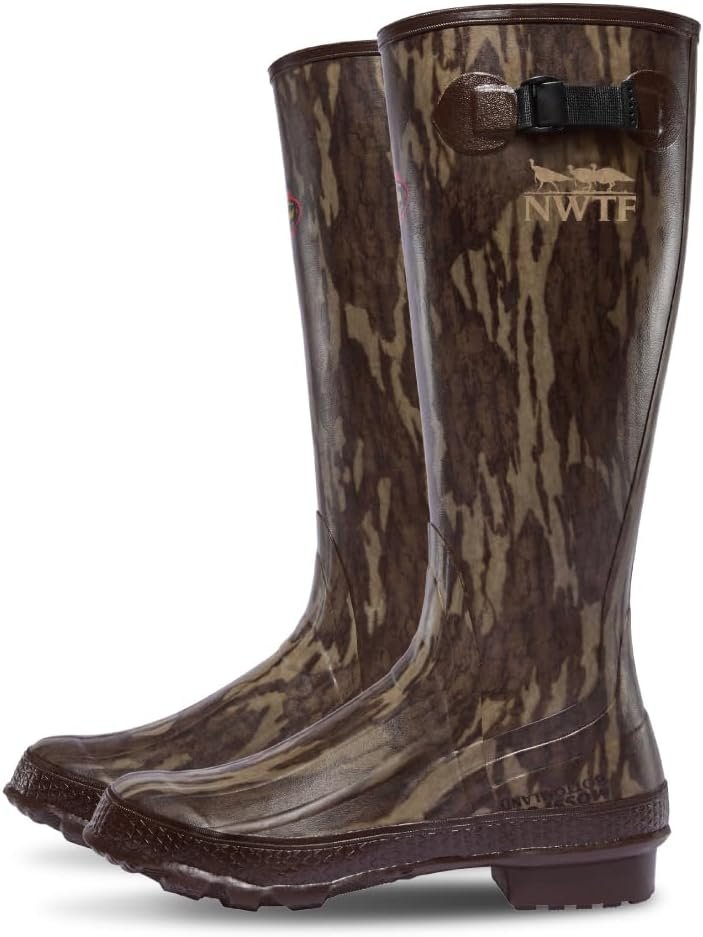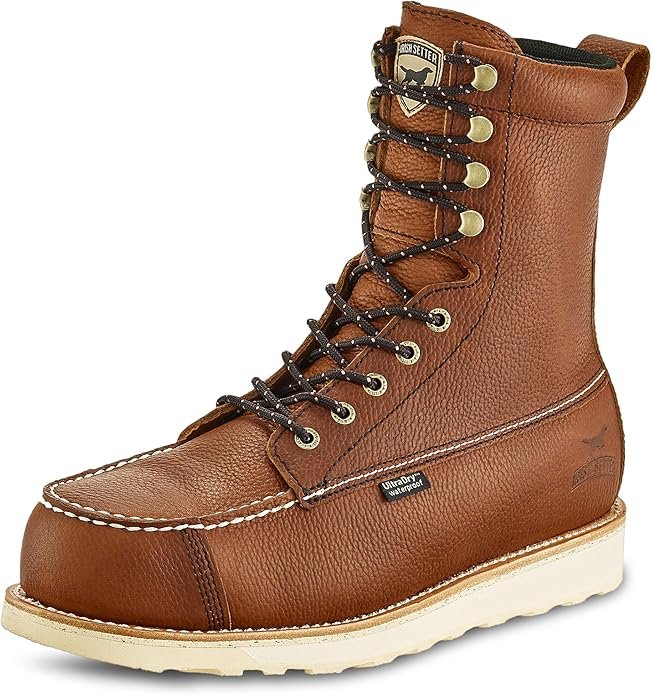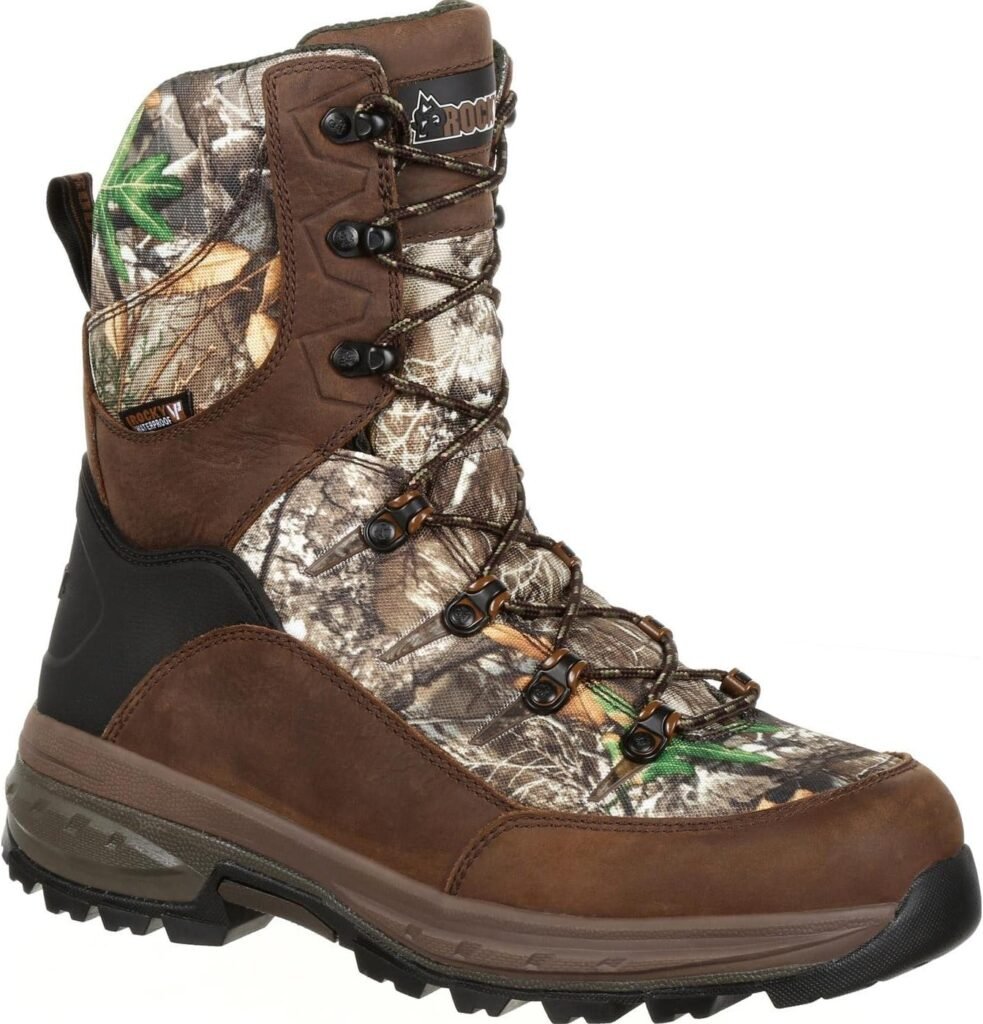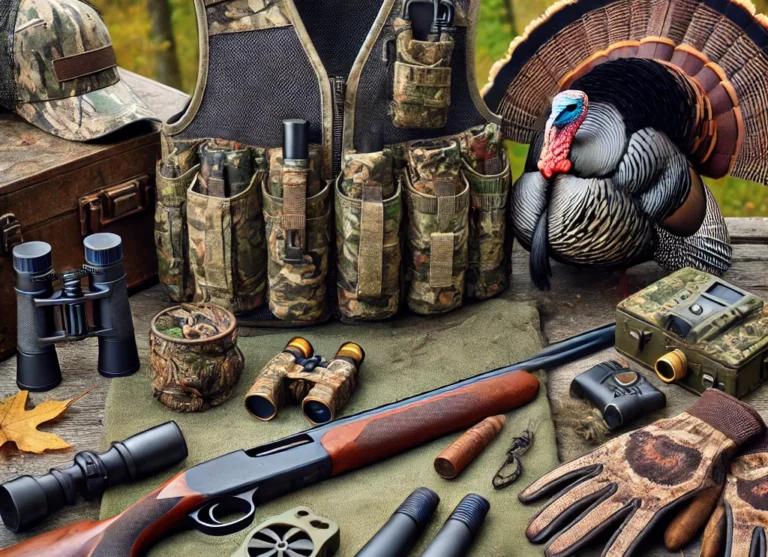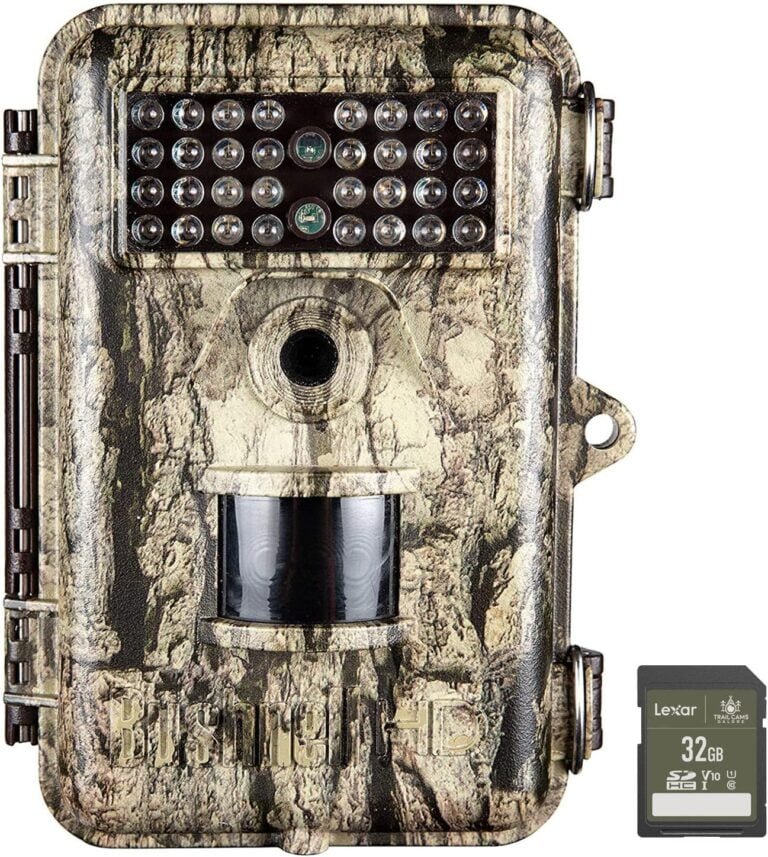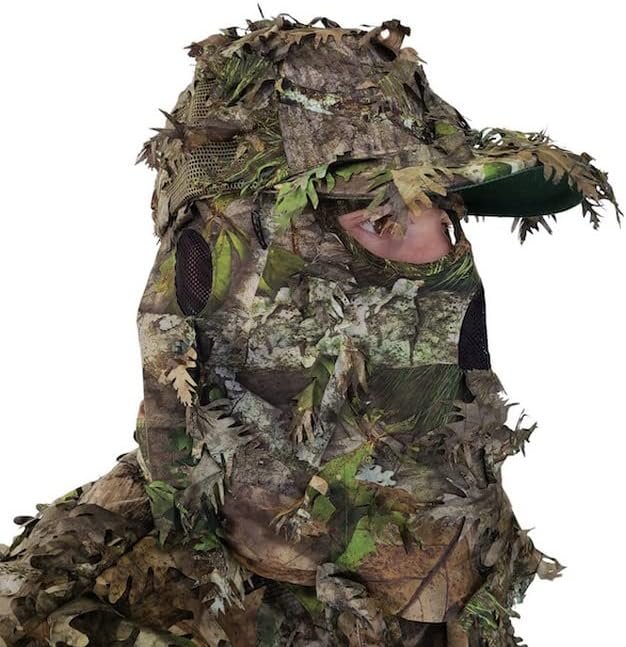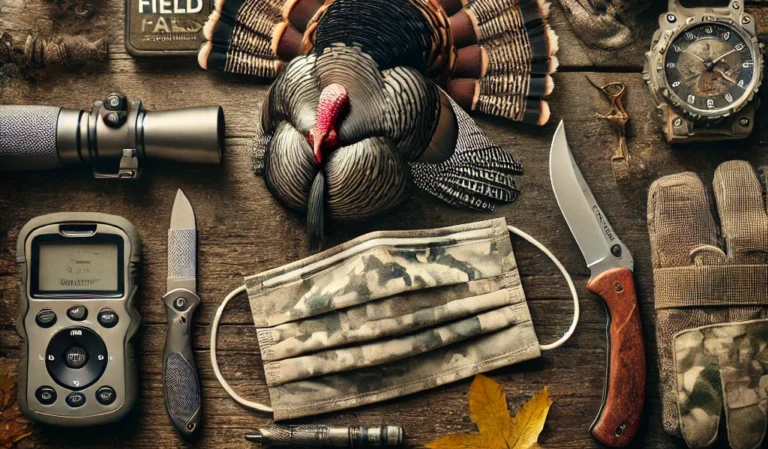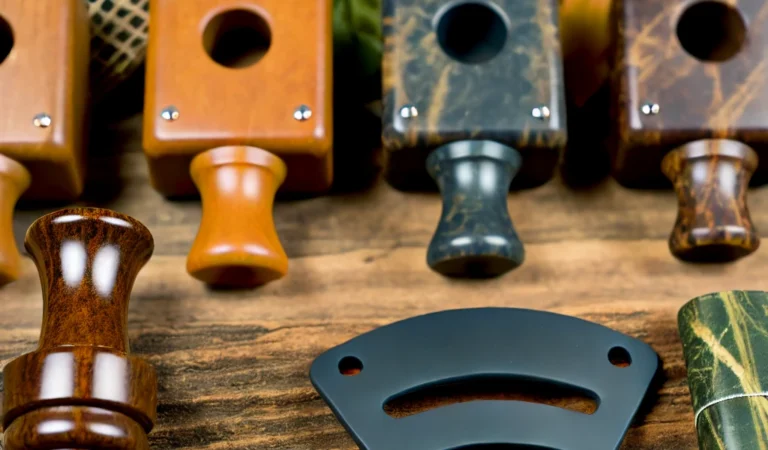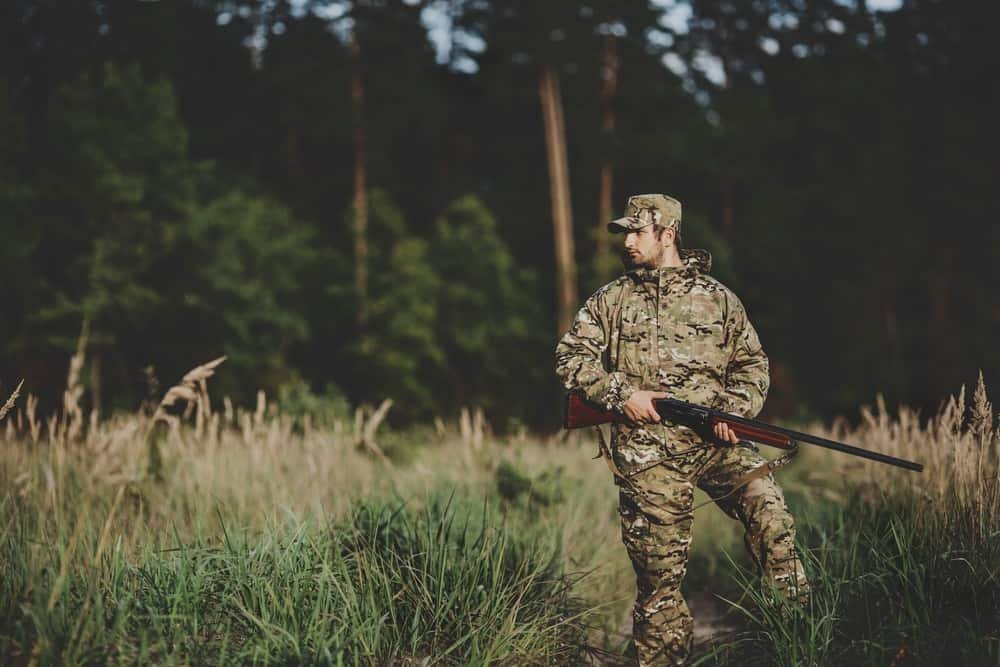The Best Turkey Hunting Boots for 2025
Picture this: You’re deep in the woods, closing in on a wily old tom. Your calls are perfect, and your camouflage is impeccable, but with each step, a loud “squish” emanates from your waterlogged boots. Just like that, your quarry vanishes into the underbrush. Don’t let subpar footwear be the weak link in your turkey hunting arsenal.
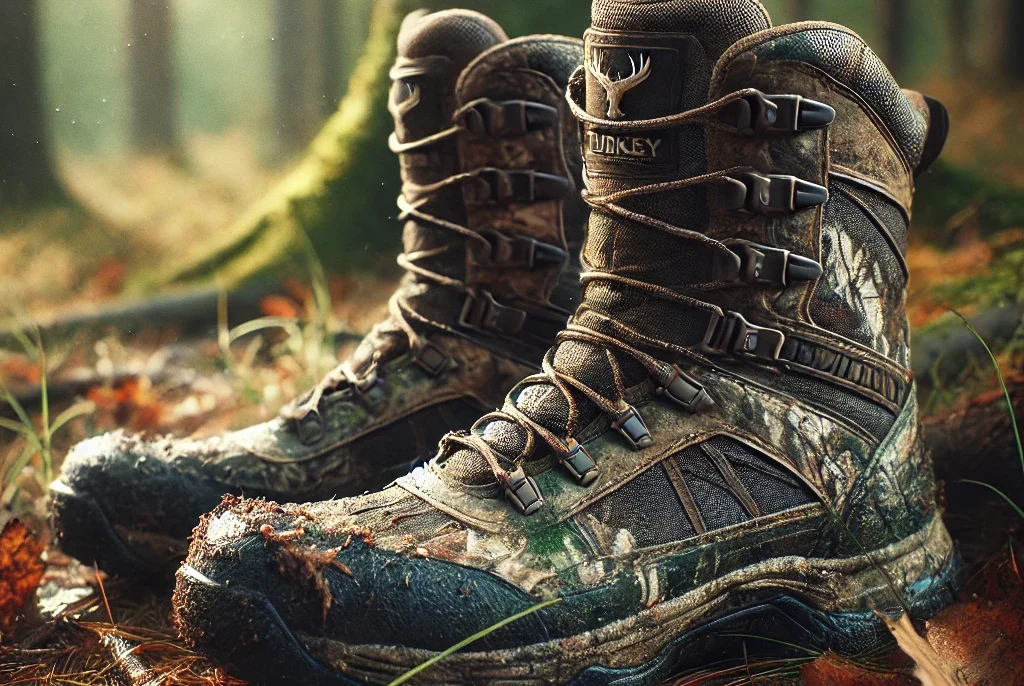
In this comprehensive guide, we’ll explain everything you need to know about choosing the best turkey hunting boots to keep you comfortable, dry, and stealthy in the field.
Whether you’re preparing for a journey in the forests of Virginia or the pines in North Carolina, our team has carefully evaluated and selected the best hunting boots for this season.
If you know what you are looking for, continue reading. If you need to think through the decision, check out our Buyer’s Guide.
The 5 Best Turkey Hunting Boots
1. Danner Pronghorn 8″ Uninsulated
The Danner Pronghorn 8″ Uninsulated is a popular choice for hunters seeking a durable, comfortable, and versatile boot.
Key Features:
- 100% waterproof GORE-TEX liner
- Full-grain CamoHide™ leather and 1000 Denier nylon upper
- Cushioning open-cell polyurethane footbed
- Vibram® SPE midsole for enhanced rebound, comfort, and support
- Excellent durability and support
- Versatile for various conditions
- Comfortable right out of the box
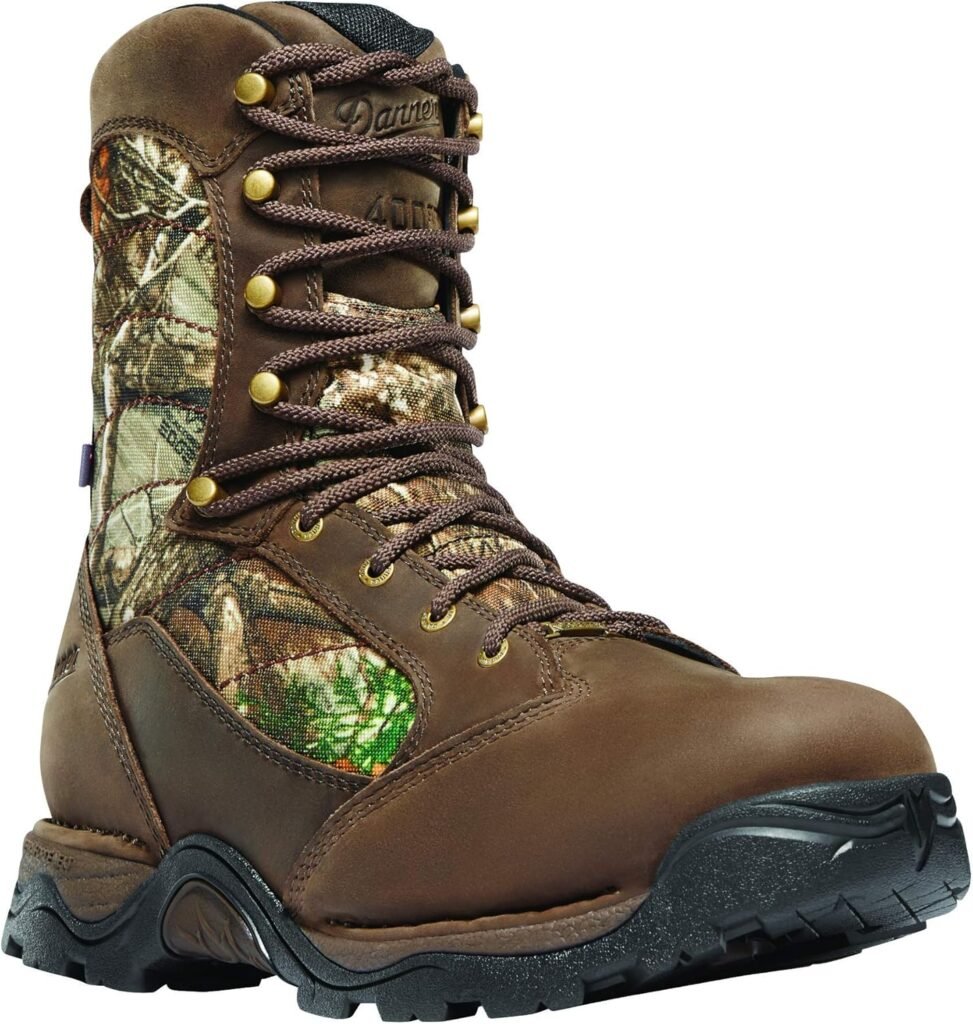
2. LaCrosse Grange 18″ Waterproof Hunting Boot
The LaCrosse Grange 18″ Waterproof Hunting Boot is popular for hunters seeking a durable, comfortable, and versatile boot. The Grange’s combination of quality materials and innovative design provides excellent performance in the field.
Key Features:
- 18″ height: Provides excellent coverage against the elements.
- Waterproof construction: Keeps your feet dry and comfortable
- LaCrosse Dura-Sole: Offers superior traction and durability
- Molded EVA midsole: Provides comfortable cushioning and support.
- Fully gusseted tongue: Prevents debris from entering the boot.
- Durability: Built to withstand the demands of hunting.
- Comfort: Offers a comfortable fit and support for long days.
- Waterproofness: Keeps your feet dry and warm in wet conditions.
- Versatility: Suitable for a variety of hunting environments.
3. Irish Setter Vaprtrek 8″ Uninsulated Boot
The Irish Setter is popular for hunters seeking a lightweight, comfortable, and versatile boot. It is a trusted choice among hunters who demand the best footwear.
Key Features:
- 8″ height: Provides adequate coverage against the elements.
- Waterproof construction: Keeps your feet dry and comfortable
- Vibram® IceLock Outsole: Offers excellent traction
- Ultra-Lightweight Design: Reduces fatigue and improves agility.
- Comfortable Fit: Features a roomy toe box and supportive midsole
- Lightweight: Ideal for hunters who prioritize agility and mobility.
- Durability: Built to withstand the demands of hunting.
4. Rocky Grizzly Waterproof 1000G Insulated Outdoor Boot
The Rocky Grizzly Waterproof 1000G Insulated Outdoor Boot is a trusted choice among hunters and outdoor enthusiasts who demand the best footwear. Its warmth, durability, and comfort make it a top contender for those seeking a high-performance boot.
Key Features:
- 1000G Thinsulate Insulation: Provides warmth and comfort.
- Waterproof Construction: Keeps your feet dry and comfortable.
- Durable Leather Upper: Offers protection and durability.
- Rocky Dura-Sole: Provides excellent traction and durability
- Molded EVA Midsole: Offers comfortable cushioning and support
- Warmth: Ideal for cold weather hunting and outdoor activities.
- Comfort: Offers a comfortable fit and support for long days
5. Muck Boot Woody Max Rubber Insulated Men’s Hunting Boot
The Muck Boot Woody Max Rubber Insulated Men’s Hunting Boot is a trusted choice among hunters and outdoor enthusiasts who demand the best in footwear. Its combination of warmth, durability, and comfort make it a top contender for those seeking a high-performance boot.
Key Features:
- 1000G Thinsulate Insulation: Provides warmth and comfort.
- Waterproof Rubber Upper: Offers protection against the elements and keeps your feet dry.
- Molded EVA Midsole: Provides comfortable cushioning and support.
- Aggressive Tread Pattern: Offers excellent traction on various terrain.
- Adjustable Calf Strap: Allows for a customized fit.
- Warmth: Ideal for cold weather
- Durability: Built to withstand the demands of rugged environments.
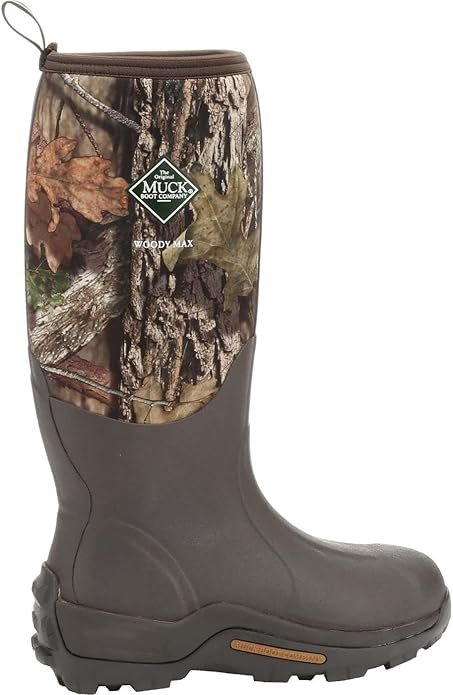
Regarding turkey hunting boots, not all footwear is created equal. Here are the critical features that separate the best from the rest:
1. Waterproofing
Nothing can ruin a hunt faster than wet feet. Look for boots with reliable waterproofing technologies like Gore-Tex or proprietary membranes. These will keep your feet dry, whether crossing shallow streams or trudging through dewy grass in the early morning.
2. Insulation
The amount of insulation you need depends on when and where you hunt. Minimal insulation or uninsulated boots might suffice for early season or southern hunts. For colder conditions, look for boots with 400 to 1000 grams of insulation. Brands like Thinsulate offer warmth without excessive bulk.
3. Comfort and Fit
You might be on your feet for hours, so comfort is paramount. Look for boots with ample cushioning, good arch support, and a fit that prevents blisters. Remember, a comfortable boot can mean the difference between quitting early and staying out for that magic hour when gobblers are most active.
4. Durability
Turkey hunting often involves traversing rough terrain. Your boots should withstand rocks, brambles, and constant use. Look for reinforced toe caps, robust stitching, and high-quality materials like full-grain leather or advanced synthetics.
5. Traction
Good traction is essential when navigating slippery hillsides or climbing over fallen logs. Look for boots with aggressive tread patterns and high-quality rubber compounds that provide grip on various surfaces.
6. Scent Control
Turkeys have a keen sense of smell. While not as critical as deer hunting, scent control can still benefit. Some boots come with antimicrobial linings or can be treated with scent-eliminating sprays.
7. Weight
Every ounce counts when you’re covering ground in search of turkeys. While you don’t want to sacrifice necessary features, finding a balance between functionality and weight is important. Lightweight boots can help reduce fatigue during long days in the field.
Remember, the best turkey hunting boot for you will depend on your specific needs, hunting style, and the conditions you typically face. In the next section, we’ll review some top contenders for the title, helping you find the perfect match for your next gobbler pursuit.
How to Choose the Right Size and Fit
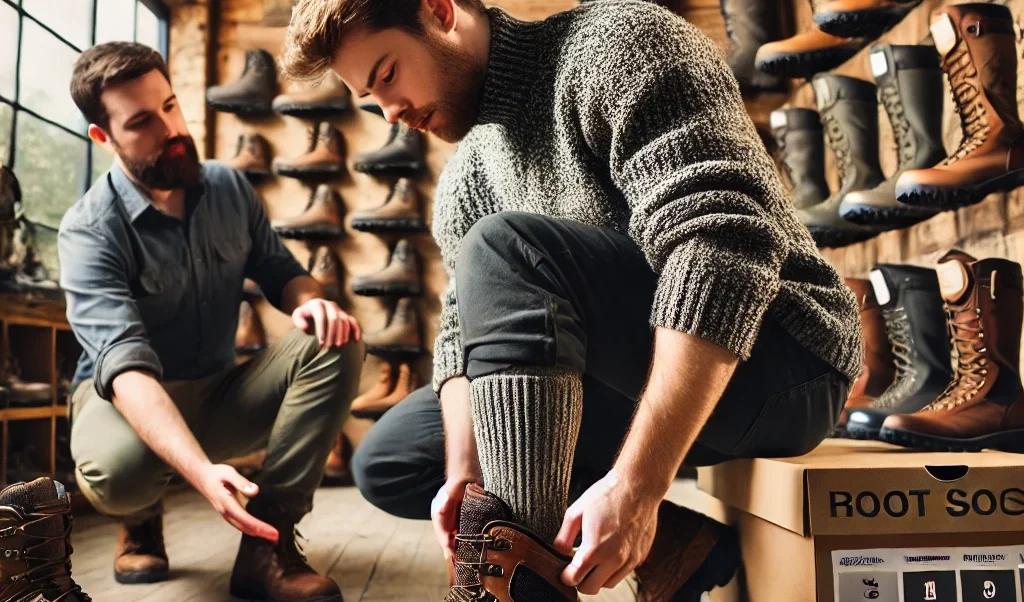
Selecting the correct size and fit for your turkey hunting boots is crucial for comfort, performance, and preventing injuries. Here’s a comprehensive guide to ensure you get the perfect fit:
Importance of Proper Sizing
Ill-fitting boots can lead to a host of problems:
Blisters and hot spots from boots that are too tight
Lack of stability and increased risk of twisted ankles from boots that are too loose
Reduced circulation in tight boots, leading to cold feet
Fatigue from the extra effort of walking in poorly fitting footwear
Conversely, properly sized boots will keep you comfortable throughout long days in the field, allowing you to focus on the hunt rather than your feet.
Tips for Measuring Your Feet
Measure at the Right Time: Feet tend to swell throughout the day, so measure in the late afternoon or evening for the most accurate size.
Use a Brannock Device: This standard foot measuring tool gives the most accurate measurements. Many outdoor stores sell them.
Measure Both Feet: It’s common for one foot to be slightly larger than the other. Always fit to your larger foot.
Consider Width: Turkey hunting boots come in various widths. Make sure to measure both the length and width of your foot.
Account for Socks: Measure your feet while wearing the socks you plan to use for hunting.
Considerations for Socks and Insoles
Sock Thickness: The thickness of your hunting socks can significantly impact fit. If you plan to wear thick, warm socks, you might need a slightly larger boot size.
Layering Socks: Some hunters prefer to layer a thin, moisture-wicking sock under a thicker wool sock. Account for this when sizing.
Insoles: If you plan to use custom insoles or orthotics, bring these along when trying on boots. They can affect both the fit and the volume inside the boot.
Trying On Boots
Walk Around: Spend time walking around in the boots. If possible, go up and down stairs to see how they perform on inclines.
Check for Heel Lift: Your heel should remain firmly in place as you walk. Excessive heel lift can lead to blisters.
Toe Room: Ensure there’s about a thumb’s width of space between your longest toe and the end of the boot. This prevents your toes from hitting the front of the boot when walking downhill.
Flex Point: The boot should flex at the same point your foot naturally bends.
Width: Your foot should be snug but not squeezed across the ball of your foot.
Breaking In Your Boots
Even the best-fitting boots usually require a break-in period:
Start by wearing your new boots around the house for short periods.
Gradually increase the duration and add some outdoor walking.
If possible, wear them on short hikes before your hunting trip.
Pay attention to any hot spots or discomfort. Address these issues before your hunt.
Online Purchasing Tips
If buying online:
Check the brand’s sizing chart carefully.
Read customer reviews for insights on how the boots typically fit.
Look for retailers with good return policies in case the fit isn’t right.
Consider ordering two sizes and returning the one that doesn’t fit as well.
Remember, a boot that fits perfectly in the store may feel different after hours on the hunt. Taking the time to ensure proper fit will pay dividends in comfort and performance when you’re in the field pursuing that elusive gobbler.
Caring for Your Turkey Hunting Boots
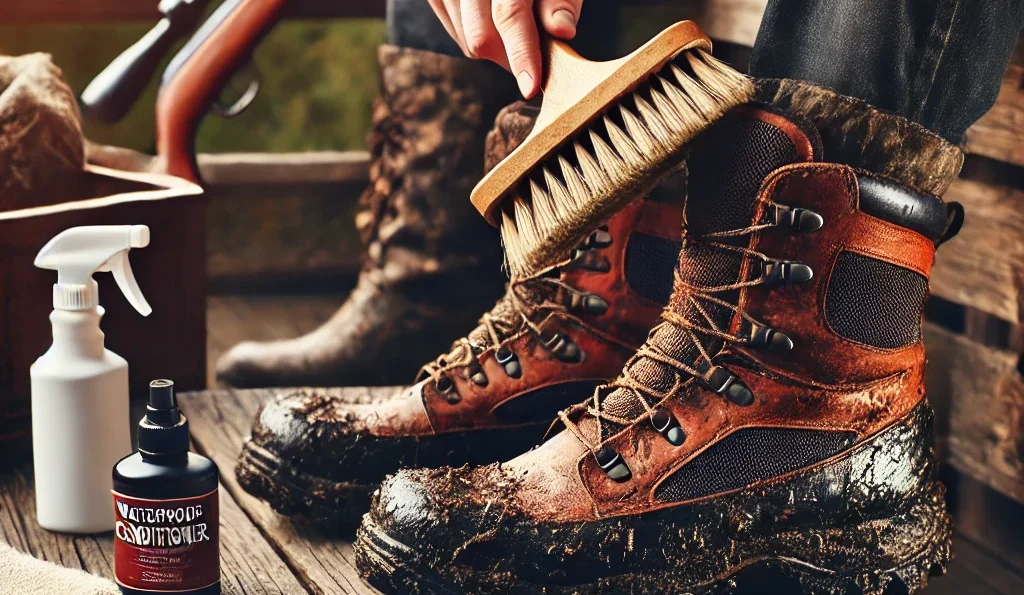
Proper care and maintenance of your turkey hunting boots extend their lifespan and ensure they perform optimally when you need them most. Here’s a comprehensive guide to keeping your boots in top condition:
Cleaning and Maintenance Tips
- Regular Cleaning
- Remove dirt and debris with a soft brush or damp cloth after each use.
- For tougher stains, use a boot-specific cleaner or mild soap and water.
- Never use harsh chemicals or detergents, which can damage the boot materials.
- Drying
- Remove insoles and laces to allow for thorough drying.
- Stuff boots with newspaper to absorb moisture and help maintain shape.
- Air dry at room temperature. Never use direct heat (e.g., radiators, hairdryers) as this can damage the boots.
- Waterproofing
- Reapply waterproofing treatment regularly, especially for leather boots.
- Choose a waterproofing product compatible with your boot material (e.g., leather, synthetic).
- Apply waterproofing to clean, dry boots for best results.
- Leather Care
- Use a leather conditioner to prevent cracking and maintain flexibility for leather boots.
- Apply conditioner sparingly to avoid over-saturating the leather.
- Odor Control
- Use boot fresheners or odor-eliminating sprays between uses.
- Cedar shoe trees can help absorb moisture and odors.
- Lace and Insole Maintenance
- Replace worn laces promptly to prevent breakage in the field.
- Clean or replace insoles regularly to maintain comfort and reduce odor.
Proper Storage
- Clean Before Storing
- Always clean and dry boots thoroughly before long-term storage.
- Use Boot Trees
- Insert boot trees or stuff with newspaper to help maintain shape.
- Cool, Dry Location
- Store in a cool, dry place away from direct sunlight to prevent material degradation.
- Avoid Plastic Bags
- Don’t store in plastic bags, which can trap moisture and promote mold growth.
- Pest Prevention
- Use cedar blocks or mothballs to deter pests, especially for leather boots.
When to Replace Your Boots
Even with excellent care, all boots eventually need replacement. Look for these signs:
- Worn Tread
- Traction and stability may be compromised if the tread pattern is significantly worn.
- Persistent Leaks
- It may be time for new boots if waterproofing treatments no longer effectively keep water out.
- Cracked or Torn Uppers
- Significant cracks or tears in the boot upper can allow water in and aren’t always repairable.
- Separated Soles
- If the sole is separating from the upper, replacing the boots is usually more cost-effective than attempting a repair.
- Compressed Cushioning
- If the boots no longer provide adequate shock absorption, it’s time for a new pair.
- Chronic Discomfort
- If your boots consistently cause blisters or pain despite being broken in, consider replacing them.
Pro Tips
- Rotate Your Boots: If possible, use two pairs of boots alternately. This allows each pair to dry thoroughly between hunts.
- Pre-Season Check: Before turkey season starts, thoroughly inspect your boots and perform any necessary maintenance.
- Field Repair Kit: Carry a small repair kit (including spare laces, waterproofing wax, and a multi-tool) for emergency fixes in the field.
By following these care and maintenance guidelines, you can significantly extend the life of your turkey hunting boots, ensuring they’re always ready for your next adventure in pursuit of that wily gobbler.
Budget Considerations
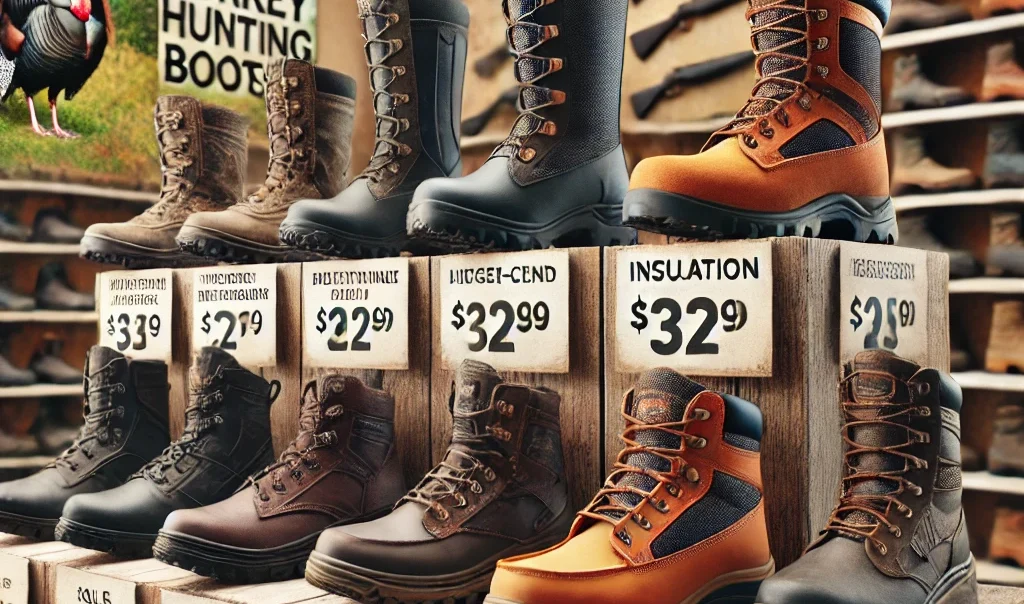
When it comes to turkey hunting boots, the old adage “you get what you pay for” often holds true. However, that doesn’t mean you need to break the bank to get a quality pair of boots. Let’s break down the price ranges and what you can expect at different budget levels.
Price Ranges for Quality Turkey Hunting Boots
- Budget-Friendly ($50-$100)
- At this price point, you’ll find basic rubber boots and some entry-level leather or synthetic options.
- Pros: Affordable, often waterproof, suitable for occasional hunters.
- Cons: May lack durability, advanced features, or optimal comfort for long hunts.
- Examples: Kamik Ranger, Northside Men’s Brule Hunting Boot
- Mid-Range ($100-$200)
- This range offers a good balance of quality and affordability.
- You’ll find boots with better materials, improved comfort features, and more reliable waterproofing.
- Pros: Good durability, better comfort for longer hunts, often include features like scent control.
- Cons: May still lack some high-end features or premium materials.
- Examples: Irish Setter Vaprtrek, Muck Boot Woody Max
- High-End ($200-$400+)
- Premium boots with top-of-the-line materials, advanced technology, and superior craftsmanship.
- Pros: Excellent durability, maximum comfort, advanced features like Gore-Tex linings or custom fit systems.
- Cons: High initial investment.
- Examples: Danner Pronghorn, Kenetrek Mountain Extreme
Value for Money Considerations
- Frequency of Use
- If you hunt frequently or for extended periods, investing in a higher-end boot can be more cost-effective in the long run.
- Occasional hunters might find mid-range options sufficient.
- Terrain and Climate
- If you hunt in extreme conditions (very wet, rocky, or cold), spending more on boots specifically designed for these conditions can be worth it.
- For milder conditions, mid-range boots often suffice.
- Durability
- Higher-priced boots often last longer, potentially offering better value over time despite the higher initial cost.
- Look for boots with warranties, which can indicate the manufacturer’s confidence in their product.
- Comfort
- Pricier boots generally offer better comfort features, which can be crucial for long days in the field.
- However, comfort is subjective. A mid-range boot that fits you perfectly may be more comfortable than an ill-fitting premium boot.
- Versatility
- If you plan to use your boots for other activities (hiking, work, etc.), investing in a higher-quality, more versatile boot could be more economical than buying separate boots for each activity.
Tips for Getting the Best Value
- Sales and Discounts
- Look for end-of-season sales or holiday discounts to get high-end boots at mid-range prices.
- Last Year’s Models
- Often, you can find significant discounts on the previous year’s boot models, which usually have minimal differences from the latest versions.
- Package Deals
- Some retailers offer package deals that include boots with other hunting gear, which can be cost-effective if you need multiple items.
- Consider Used Options
- Gently used high-end boots can sometimes be found at significant discounts. Just be sure to thoroughly inspect them for wear and tear.
- Invest in Care Products
- Spending a bit extra on quality care products can extend the life of your boots, improving their long-term value.
Remember, the most expensive boot isn’t always the best choice for everyone. Consider your specific needs, hunting style, and budget to find the boot that offers the best value for you. A mid-range boot that fits well and meets your needs can be a better choice than a top-end boot that’s not quite right for your hunting style.
Seasonal Considerations
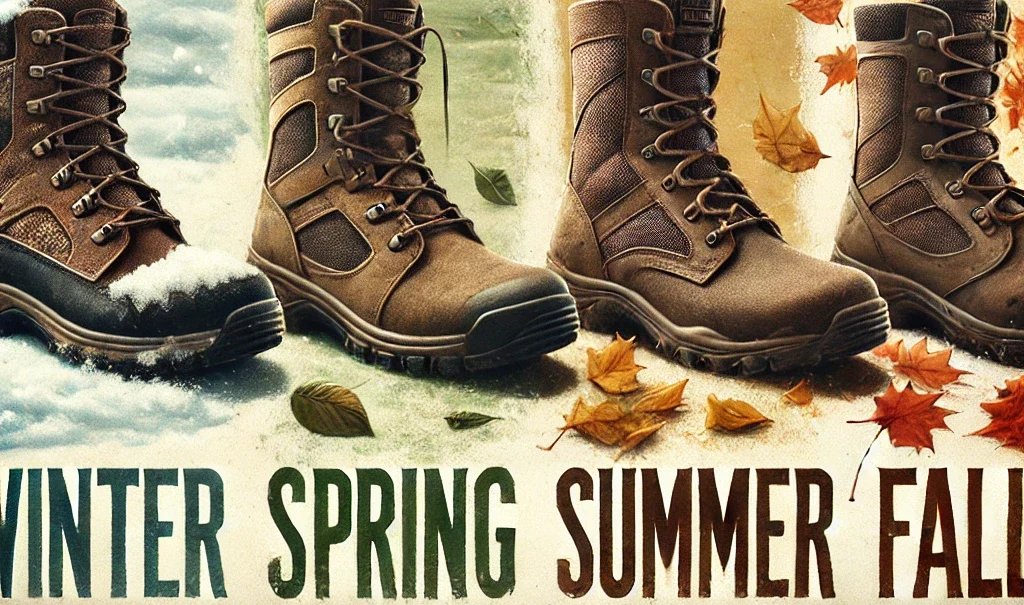
Turkey hunting seasons can vary greatly in terms of weather and terrain conditions. Choosing the right boots for each season can significantly impact your comfort and success in the field. Let’s break down the considerations for spring and fall turkey hunting and how to adapt to different weather conditions.
Spring Turkey Hunting Boots
- Waterproofing
- Spring often brings rain and morning dew, making waterproofing crucial.
- Look for boots with reliable waterproof membranes like Gore-Tex or proprietary technologies.
- Breathability
- As temperatures rise throughout the day, breathable boots help prevent sweaty feet.
- Consider boots with moisture-wicking linings and breathable uppers.
- Moderate Insulation
- Early spring mornings can be chilly, but days often warm up.
- Boots with 200-400 grams of insulation are usually sufficient for spring hunts.
- Lightweight Design
- Spring hunts often involve more movement to locate and pursue birds.
- Lighter boots can help reduce fatigue during long days of run-and-gun hunting.
- Snake Protection
- In some regions, spring brings increased snake activity.
- Consider snake boots or gaiters in areas where venomous snakes are common.
Fall Turkey Hunting Boots
- Increased Insulation
- Fall temperatures are generally cooler, especially in the mornings and evenings.
- Boots with 400-800 grams of insulation are often appropriate for fall hunts.
- Durability
- Fall terrain may be rougher with fallen leaves and debris.
- Look for boots with reinforced toe caps and durable outsoles.
- Traction
- Fallen leaves and frost can make terrain slippery.
- Boots with aggressive tread patterns provide better grip in these conditions.
- Waterproofing
- While perhaps not as crucial as in spring, waterproofing is still important for dewy mornings and unexpected rain.
- Scent Control
- In some areas, fall turkey season overlaps with deer season.
- Boots with scent-control features can be beneficial if you’re in deer country.
Adaptability for Different Weather Conditions
- Layered Sock System
- Use a thin, moisture-wicking sock under a thicker wool sock.
- This system allows you to adjust warmth by changing the outer sock as temperatures fluctuate.
- Versatile Boot Choice
- Consider boots with moderate insulation (400 grams) as a good all-around choice.
- These can be adapted for warmer or cooler conditions with sock choices.
- Gaiters
- Waterproof gaiters can add weather protection to your boots in extremely wet conditions.
- They also provide additional warmth and protection from brushes and briars.
- Spare Boots
- If possible, bring a spare pair of boots with different insulation levels.
- This allows you to switch based on weather conditions or if one pair gets soaked.
- Insoles
- Thermal insoles can be added for extra warmth on cold days.
- Conversely, they can be removed if temperatures rise.
- Boot Dryers
- Portable boot dryers can be a game-changer for multi-day hunts in wet conditions.
- They ensure you start each day with dry boots, regardless of the previous day’s weather.
Pro Tips for Seasonal Boot Selection
- Check Local Forecasts
- Always check detailed weather forecasts for your hunting area before selecting boots.
- Pay attention to both temperature and precipitation predictions.
- Consider Terrain Changes
- Spring terrain might be muddier, while fall terrain could be drier and covered in leaves.
- Choose boot tread patterns appropriate for the expected conditions.
- Test Before the Hunt
- If purchasing new boots for a specific season, test them in similar conditions before your hunt.
- This ensures they perform as expected in seasonal weather.
- Adapt to Regional Differences
- Spring in Florida is very different from spring in Maine.
- Research typical conditions for your specific hunting location and time of year.
Considering these seasonal factors, you can choose boots that will keep you comfortable and focused, regardless of what Mother Nature throws your way during your turkey hunt. Remember, the right boots can distinguish between an enjoyable, successful hunt and a miserable experience cut short by cold, wet feet.
